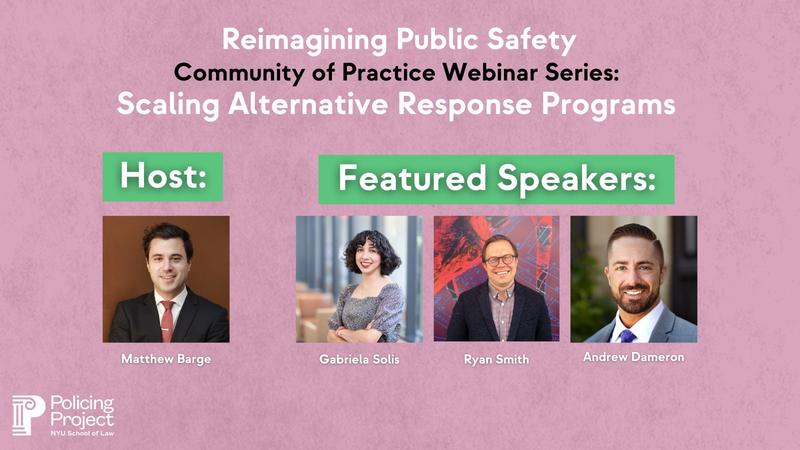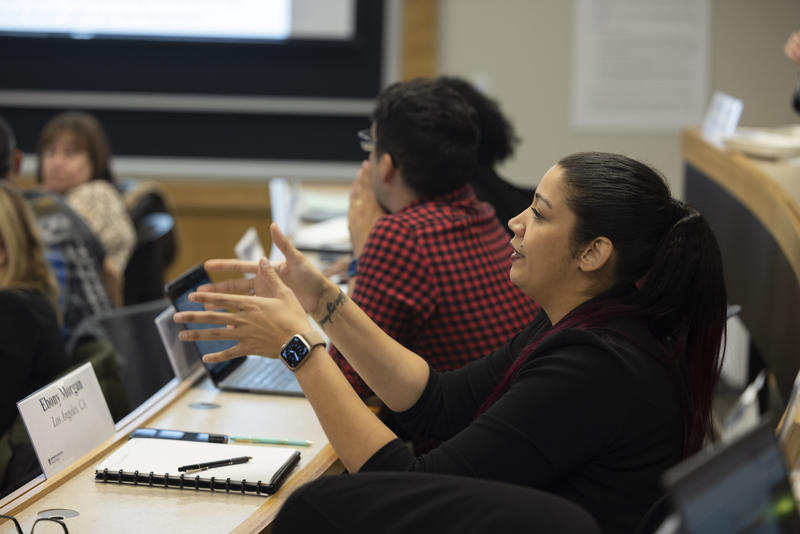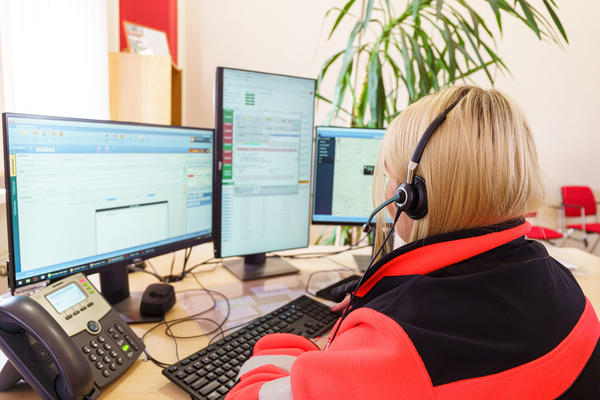
Strengthening Alternative 911 Emergency Response
In early April, the Harvard Kennedy School Government Performance Lab (GPL) co-hosted a webinar with the NYU School of Law’s Policing Project on scaling alternative 9-1-1 emergency response programs. Panelists shared first-hand, field-level insights about why, when, and how to scale alternative response programs, as well as common challenges to expansion. 225 practitioners from mayor’s offices and police departments, researchers, and others attended. Panelists included:

The panelists highlighted four key considerations for scaling alternative response programs:
Scaling does not only mean growing the program geographically to cover the entire jurisdiction, as GPL Project Leader Gabriela Solis pointed out. Jurisdictions can consider multiple pathways to expand their program’s reach: for example, lengthening a program’s operating hours, adding peer support specialists to alternative response teams, increasing the types of 9-1-1 calls eligible for alternative response, and lifting programmatic restrictions on calls, such as starting to respond to calls involving youth.
Solis shared how expansion can serve as an opportunity to revisit programmatic restrictions established earlier to reassess their relevance and impact on the program’s reach. She described her experience working with local agency staff as they scale their program: “It gives us an opportunity to work backwards and see, ‘Where are you all losing calls?’” Solis explained how once an agency has identified that a program restriction is limiting impact, she and program leadership can work to remove the need for such a restriction. For example, if an alternative response program currently does not respond to calls involving youth, implementing specialized training or referrals for youth could allow them to begin answering such calls. Incorporating these types of programmatic changes into the scaling process allows local agencies to expand their program’s effect and revisit their goals.
Panelists highlighted 9-1-1 dispatcher staff as crucial to the success and sustainability of alternative response programs. Solis detailed how maintaining buy-in from 9-1-1 dispatchers can be especially challenging when scaling up from a pilot since progress can often be incremental, rather than immediate and large-scale. Thus, sustaining their commitment during expansion of the program requires consistent expectation-setting. As Solis shared, “When we’re running these small pilots that are set up for slow growth and learning … there’s a risk for the rhetoric to be that the programs aren’t effective or they’re not working. You really have to manage the expectations around what the pilot is and how it’s meeting our goals.”
Among the advice speakers shared for other local agencies was to build programs with an eye towards the future. Ryan Smith, director of Durham’s Community Safety Department, advised, “Begin with scaling in mind. … Make sure that you know what data you want to collect and you’re collecting it from the start. Whatever it means to be integrated in your 9-1-1 system, take time to do that. Because it will pay real dividends, and it will make the work of figuring out how to scale easier.”
Speakers also recommended engaging with peer jurisdictions with alternative response programs to apply relevant insights from their programs. Andrew Dameron, who helps lead Denver’s Support Team Assisted Response (STAR) program, advised, “The more you can engage with your peers around the country that are doing this work, the more you can pick and choose the pieces that are going to work. … It will allow you to build a program that is bespoke for your community, which is ultimately what you need to be successful.” Jurisdictions exploring, planning, or implementing alternative 911 response teams can join the GPL’s Community of Practice, which we operate exclusively for government practitioners to facilitate peer-to-peer learning and troubleshoot issues. Dameron continued, “Now is a great time to be building a program like this because there’s a lot of education that’s out there to help you succeed.”
For more content from the webinar, watch the recording.
Strengthening Alternative 911 Emergency Response
Strengthening Alternative 911 Emergency Response
Strengthening Alternative 911 Emergency Response
Strengthening Alternative 911 Emergency Response
Strengthening Alternative 911 Emergency Response
Strengthening Alternative 911 Emergency Response


